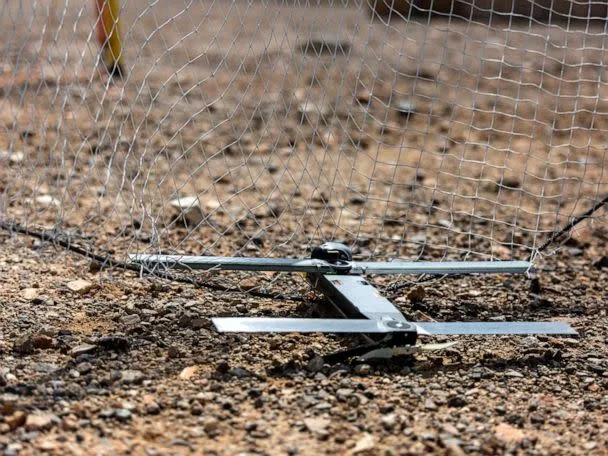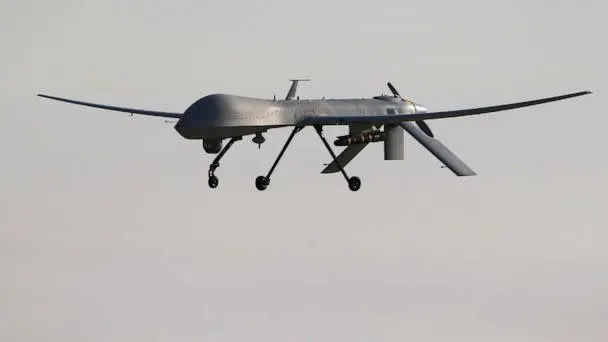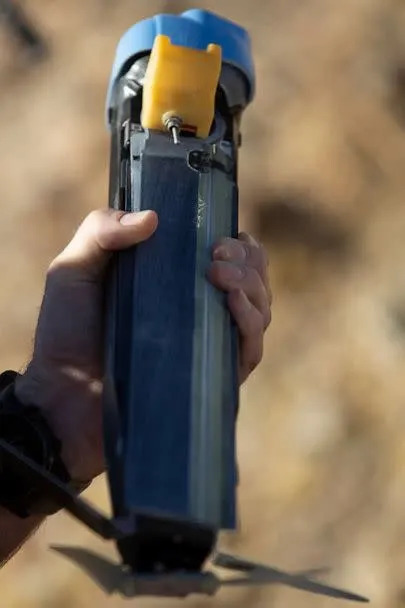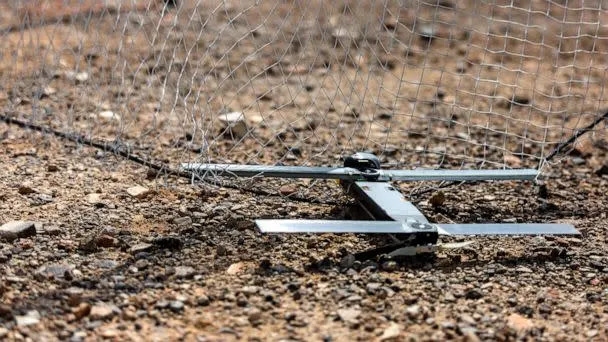ABC News
What to know about the 100 US ‘Switchblade’ drones heading to Ukraine
Luis Martinez and Matt Seyler – March 16, 2022

In a White House list of weapons being sent to Ukraine as part of a new $800 million military support package announced by President Joe Biden Wednesday — among nearly 10,000 anti-armor weapons, 800 anti-aircraft Stinger systems, and thousands of rifles — appeared 100 “tactical unmanned aerial systems.”
But these aren’t the large U.S. drones you’re used to seeing.
MORE: Message to Moscow: Biden boosts military aid to Ukraine in public display
The 100 unmanned systems heading to Ukraine are actually small “Switchblade” drones, a U.S. official told ABC News.

Unlike long-range Predator drones, which look similar to small planes and fire missiles at targets, the smallest Switchblade model fits in a rucksack and flies directly into targets to detonate its small warhead.
MORE: Russia ramps up missile strikes on Kyiv as ground forces stall: Pentagon Day 20 update

Less than 2-feet long and weighing only 5.5 pounds, the Switchblade 300 can be launched from a small tube that resembles a mortar, after which it can fly for up to 15 minutes. The larger Switchblade 600 is effective against armored targets and can fly for more than 40 minutes, but weighs 50 pounds, according to the manufacturer.
MORE: Biden details US military aid for Ukraine following Zelenskyy’s appeal to Congress

The U.S. official could not say whether one or both of the systems would be included in the 100 units destined for Ukraine.
Both Switchblades use onboard sensors and GPS to guide them to their targets. Both also have a “wave-off” feature so that human operators can abort an attack if civilians appear near the target or if the enemy withdraws.

“These were designed for U.S. Special Operations Command and are exactly the type of weapons systems that can have an immediate impact on the battlefield,” said Mick Mulroy, former deputy assistant secretary of defense and an ABC News national security and defense analyst.
Related:
Politico
U.S. sending Switchblade drones to Ukraine in $800 million package
Paul McLeary and Alexander Ward – March 16, 2022

The U.S. will send 100 Switchblade drones to Ukraine as part of the Biden administration’s new $800 million weapons package, Texas Rep. Mike McCaul, the top Republican on the House Foreign Affairs Committee, told POLITICO.
The inclusion of the “tactical” drones, which crash into their targets, represents a new phase of weaponry being sent to Ukraine by the U.S., which so far has shipped mostly anti-tank and anti-aircraft weapons. An administration official confirmed McCaul’s account that the U.S. is sending the Switchblade.
The Switchblade is a small, light drone that can loiter in the air for up to 30 minutes before being directed to its target by an operator on the ground, dozens of miles away. The drone is launched from a tube, like a mortar shell. Its real-time GPS guidance allows a service member in the field to fly it until the moment it crashes and explodes into whatever the target might be.
The weapon was first fielded in Afghanistan by U.S. special operations forces, but quickly was picked up by the Army and Marine Corps, who saw value in the light, accurate munition that can help thwart ambushes or take out vehicles.
McCaul also said that the U.S. was “working with allies” to send more S-300 surface-to-air missile systems to Ukraine. The country has had the S-300 for years, so troops should require little-to-no training on how to operate the Soviet-era anti-aircraft equipment. CNN reported that Slovakia had preliminarily agreed to transfer their S-300s to Ukraine.
The revelations come shortly after President Joe Biden announced the new $800 million in military assistance to Ukraine, which also includes 800 more Stinger anti-aircraft systems, 2,000 anti-armor Javelins, 1,000 light anti-armor weapons and 6,000 AT-4 anti-armor systems. The AT-4 is a lightweight recoilless rifle already used by American special operations forces.
“The United States and our allies and partners are fully committed to surging weapons of assistance to the Ukrainians, and more will be coming as we source additional stocks of equipment that we’re ready to transfer,” Biden said.
Hours earlier, Ukrainian President Volodymyr Zelenskyy delivered a virtual speech to members of Congress, imploring the president and lawmakers to implement a no-fly zone over Ukraine and provide his country with more materiel.
A Western diplomat familiar with Ukraine’s requests said Kyiv specifically has asked the U.S. and allies for more Stingers and Starstreak man-portable air-defense systems, Javelins and other anti-tank weapons, ground-based mobile air-defense systems, armed drones, long-range anti-ship missiles, “off-the-shelf” electronic warfare capabilities, and satellite navigation and communications jamming equipment.
“I have a dream. These words are known to each of you today,” Zelenskyy said. “I can say, I have a need. I need to protect our sky. I need your help.”
“We need to give him more defense mechanisms. He kept saying no-fly zone. I think that’s probably still a non-starter,” Sen. Shelley Moore Capito (R-W.Va.) told POLITICO. “That doesn’t mean we can’t up the amount, do more with equipment and drones and other things that would be just as helpful.”
Ukraine has succeeded in defending Kyiv, the capital, and stalling Russia’s advances three weeks after the invasion started. The U.S.-led Western push to put advanced, lethal weaponry in Ukrainian hands boosted the resistance, which to date has met a shambolic Russian advance lacking in strategy and logistics.
To further help, there is a push to get Eastern European allies to send new air defense systems to Ukraine that the U.S. doesn’t have. At the top of the list are mobile, Russian-made missile systems such as the SA-8 and S-300. Like the S-300, Ukraine also possesses SA-8s.
The SA-8 is a mobile, short-range air defense system still in the warehouses of Romania, Bulgaria and Poland. The larger, long-range S-300 is still in use by Bulgaria, Greece and Slovakia.
Defense Secretary Lloyd Austin’s trip to Europe this week will include not only NATO headquarters in Brussels, but also stops in Bulgaria and Slovakia — countries that own S-300s and SA-8s — before heading back to Washington, D.C.
